Aircraft Flight
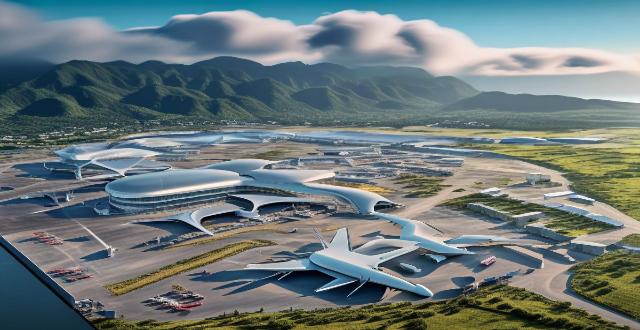
What are the challenges faced by air travel industry due to changing climate patterns ?
The air travel industry is facing numerous challenges due to changing climate patterns, including extreme weather events, altered flight paths, airport infrastructure damage, health risks, and environmental concerns. These challenges can impact flight schedules, increase maintenance costs, and require changes to air traffic control systems. To adapt, airlines must invest in innovative solutions that prioritize sustainability and resilience.

What should I include in my carry-on luggage for a long-haul flight ?
When packing your carry-on luggage for a long-haul flight, it's important to consider the items that will make your journey more comfortable and enjoyable. Here are some essential items to include: ### 1\. Personal Items - **Passport and travel documents**: Make sure to bring your passport, visa (if required), boarding pass, and any other necessary travel documents. - **Wallet and money**: Bring your wallet with cash, credit cards, and any currency you may need for your destination. - **Phone and charger**: Don't forget your phone and its charger, as well as any necessary adapters or converters for international use. - **Medication and health products**: If you have any medication or health products that you need during the flight, make sure to pack them in your carry-on luggage. - **Personal hygiene items**: Pack a small toiletry bag with items such as toothbrush, toothpaste, deodorant, hand sanitizer, and moisturizer. ### 2\. Comfort Items - **Snacks and drinks**: Bring some snacks and water to keep yourself hydrated and satisfied during the flight. - **Entertainment**: Pack a book, magazine, or e-reader to keep yourself entertained during the flight. You can also download movies or TV shows onto your device beforehand. - **Headphones or earbuds**: Bring headphones or earbuds to listen to music, watch movies, or block out noise during the flight. - **Travel pillow and blanket**: A travel pillow and blanket can help you get comfortable and restful during the flight. - **Eye mask and earplugs**: An eye mask and earplugs can help you block out light and noise, allowing you to sleep more easily during the flight. ### 3\. Clothing and Accessories - **Comfortable clothing**: Wear comfortable clothing on the flight, such as stretchy pants or leggings, a loose-fitting shirt, and comfortable shoes. - **Sweater or jacket**: Bring a sweater or jacket to keep yourself warm during the flight, especially if you tend to get cold easily. - **Socks and slippers**: Pack a pair of socks and slippers to keep your feet warm and comfortable during the flight. - **Sunglasses and hat**: Bring sunglasses and a hat to protect yourself from the sun when you arrive at your destination. ### 4\. Miscellaneous Items - **Reusable water bottle**: Bring an empty reusable water bottle to fill up after passing through security, rather than buying bottled water at the airport. - **Pen and paper**: Bring a pen and paper to jot down notes or ideas during the flight. - **Travel journal**: If you enjoy writing, consider bringing a travel journal to document your experiences during the trip. - **Small backpack or purse**: Use a small backpack or purse to store all of your carry-on items, making it easy to access them during the flight.
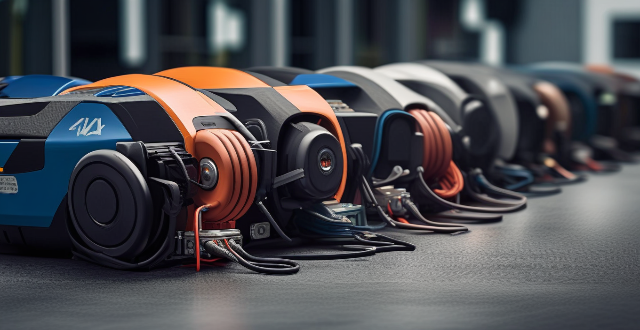
Can a DC brushed motor be used for high-power applications such as electric vehicles or aircraft ?
DC brushed motors have advantages such as simplicity, reliability, and cost-effectiveness. However, they face challenges in high-power applications like electric vehicles or aircraft due to limited power output, efficiency issues, and maintenance concerns. Alternatives like brushless motors and switched reluctance motors are better suited for these scenarios due to their higher power density, improved efficiency, and reduced maintenance requirements.

Can I still get a tax refund if I have a connecting flight within the EU ?
To obtain a tax refund when you have a connecting flight within the EU, follow these steps: purchase goods in a participating store, complete the tax-free shopping form, obtain a customs stamp, and claim your tax refund. Having a connecting flight does not affect your ability to get a tax refund.
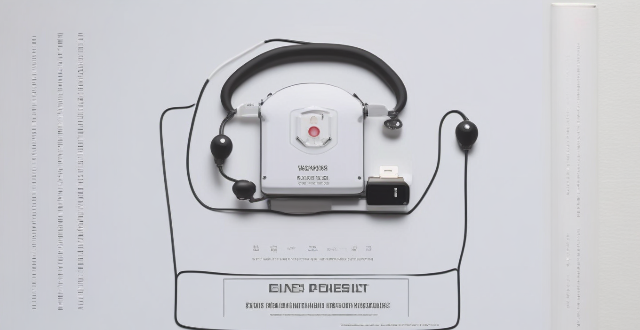
Are there any disadvantages to using an electronic speed controller ?
Electronic speed controllers (ESCs) have some drawbacks, including complexity, cost, battery drain, and compatibility issues.

How early should I arrive at the airport before my flight ?
When it comes to arriving at the airport before your flight, there are several factors to consider. Here are some general guidelines to help you plan your trip: - For domestic flights within the United States or other countries, it is generally recommended to arrive at the airport at least 2 hours before a non-peak hour flight and 3 hours before a peak hour (morning and evening rush hours) flight. - For international flights departing from the United States or other countries, it is generally recommended to arrive at the airport at least 3 hours before a non-peak hour flight and 4 hours before a peak hour (morning and evening rush hours) flight. - If you have any special circumstances such as checking bags, traveling with children or elderly persons, or needing extra time for security screenings, customs, and immigration procedures, you may want to allow for more time. - Additional factors that can impact how early you should arrive at the airport include airport size and location, time of day, transportation method, security measures, and special circumstances. Overall, it is always better to arrive at the airport earlier rather than later to avoid any last-minute stress or missed flights. Plan ahead and give yourself plenty of time to navigate through the airport processes smoothly.

What are some tips for finding cheap flights and accommodations ?
Finding cheap flights and accommodations can be a daunting task, but with the right strategies, you can save money and still have a great travel experience. Here are some tips to help you find affordable options: ## 1\. Be Flexible with Your Travel Dates One of the best ways to find cheap flights and accommodations is to be flexible with your travel dates. Prices often fluctuate depending on the time of year, day of the week, and even the time of day. If possible, try to travel during off-peak seasons or midweek when prices tend to be lower. ## 2\. Book in Advance or Last Minute Booking your flight and accommodation well in advance can often result in significant savings. However, if your schedule allows it, booking last minute can also lead to great deals as airlines and hotels look to fill empty seats and rooms. ## 3\. Use Flight Aggregator Websites Flight aggregator websites like Skyscanner, Kayak, and Google Flights allow you to compare prices across multiple airlines and find the best deals. These sites often have features that enable you to set price alerts or search for flights from nearby airports, which can sometimes be cheaper. ## 4\. Consider Alternative Airports Flying into an alternative airport near your destination can sometimes result in lower airfare. For example, flying into Newark instead of JFK in New York City might save you money on your flight. ## 5\. Sign Up for Newsletters and Loyalty Programs Signing up for newsletters and loyalty programs from airlines and hotels can provide you with exclusive discounts and promotions. These offers can help you save money on future bookings. ## 6\. Use Credit Card Rewards If you have a credit card that offers travel rewards, consider using those rewards to pay for your flights or accommodations. This can significantly reduce the cost of your trip without having to spend additional money out of pocket. ## 7\. Look for Package Deals Sometimes booking a flight and hotel together as a package deal can be cheaper than booking them separately. Travel agencies and online booking platforms often offer package deals that include both elements of your trip at a discounted rate. ## 8\. Avoid Peak Travel Seasons Traveling during peak seasons like summer or holidays can be more expensive due to high demand. If possible, try to plan your trip during off-peak seasons when prices are generally lower. ## 9\. Use Budget Airlines and Accommodations Budget airlines and accommodations can offer significant savings compared to their full-service counterparts. While they may not provide all the amenities of more expensive options, they can be a great way to save money on your trip. ## 10\. Negotiate with Hotels Directly Calling hotels directly and asking about any available discounts or promotions can sometimes result in better rates than booking online. It's always worth asking if there are any unadvertised deals available.

What are the most common mistakes travelers make at the airport ?
Traveling through airports can be stressful, but avoiding these common mistakes can make the experience smoother and more enjoyable. Here are some of the most common mistakes travelers make at the airport: 1. Not checking in online before arriving at the airport, which can lead to long wait times and potentially missing your flight. 2. Arriving late to the airport, which can cause stress and anxiety as you rush to get through security and find your gate. 3. Overpacking in your carry-on luggage, which can make it harder to navigate through the airport and result in having to pay extra fees if your bag exceeds weight or size restrictions. 4. Not being prepared for security checks, which can slow you down and cause delays. 5. Not knowing where your gate is located before heading to the airport, which can cause confusion and potentially missing your flight. 6. Not charging electronics before heading to the airport, which can leave you without access to important devices during your flight or while waiting at the airport.

How can I make the most of a long layover at the airport ?
How to Make the Most of a Long Layover at the Airport Having a long layover at the airport can be both a blessing and a curse. On one hand, it gives you more time to relax and explore the airport amenities. On the other hand, it can also be boring and frustrating if you don't know how to make the most of your time. Here are some tips on how to make the most of a long layover at the airport: 1. **Explore the Airport** * Visit the Duty-Free Shops: Duty-free shops offer a wide range of products, from cosmetics and perfumes to electronics and souvenirs, often at discounted prices. Take advantage of this opportunity to do some shopping or pick up a gift for someone special. * Check Out the Food Courts: Airport food courts offer a variety of dining options, from fast food to sit-down restaurants. Use this time to try out new dishes or enjoy your favorite meal before your next flight. * Visit the Art Galleries and Exhibits: Many airports feature art galleries and exhibits showcasing local artists and culture. Take a stroll through these areas to learn more about the destination you're visiting or passing through. 2. **Relax and Recharge** * Find a Quiet Spot to Read or Work: Look for quiet areas in the airport where you can settle down with a good book or catch up on work without distractions. Many airports have designated quiet zones or business centers equipped with comfortable seating and charging stations. * Get a Massage or Spa Treatment: Some airports offer massage chairs, spa treatments, and even yoga classes to help travelers relax and rejuvenate during their layover. Check out the airport's website or ask staff for information on available services. * Take a Nap in a Lounge or Sleep Pod: If you need to rest, consider paying for access to an airport lounge that offers comfortable seating, snacks, and beverages. Alternatively, some airports have sleep pods where you can rent a private space to take a nap for a few hours. 3. **Stay Connected** * Use Free Wi-Fi: Most airports offer free Wi-Fi service, allowing you to stay connected with friends, family, and work while waiting for your next flight. Look for signs indicating the network name and password, or ask airport staff for assistance. * Charge Your Devices: Make sure your devices are fully charged before boarding your next flight by using the available charging stations throughout the airport. Some airports also offer portable chargers for rent or purchase if you need extra power. 4. **Stay Entertained** * Watch Movies or TV Shows: Many airports have screens displaying movies, TV shows, and live sports events. Find a comfortable spot near one of these screens and enjoy the entertainment while waiting for your flight. * Download Entertainment Apps: Download apps like Netflix, Hulu, or Amazon Prime Video before your trip so you can stream movies, TV shows, and music offline during your layover. This way, you won't have to worry about using data or finding Wi-Fi connections.
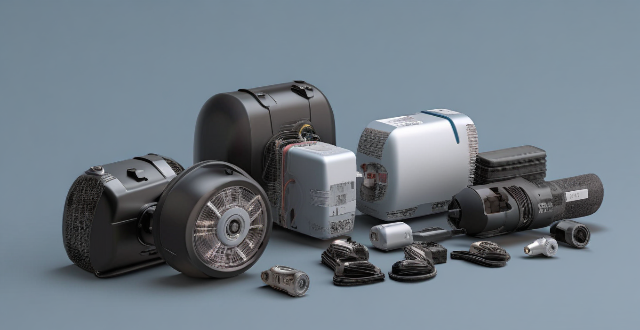
Can you provide some examples of applications where multi-motor drives are used ?
Multi-motor drives are used in various applications where multiple motors need to be controlled simultaneously, including industrial automation, CNC machines, electric vehicles, wind turbines, robotics, and aerospace.

What are the best ways to stay connected and charged while traveling through the airport ?
Best Ways to Stay Connected and Charged at the Airport: Stay connected by using free Wi-Fi, downloading airline and airport apps for updates, and considering SIM cards or eSIMs for international travel. Stay charged by bringing a portable power bank, charging cables, an international travel adapter, and backup batteries. Take advantage of charging stations, priority lanes, and seat charging on planes.
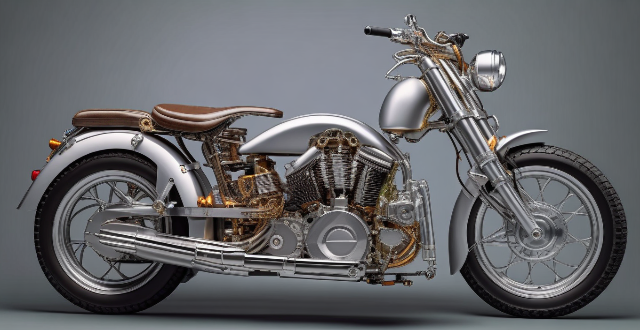
In what applications are internal rotor motors commonly used ?
Internal rotor motors, also known as rotary motors or simply electric motors, are widely used in various applications due to their ability to convert electrical energy into mechanical energy. These motors consist of a stationary component (stator) and a rotating component (rotor), which is located inside the stator. The rotor is driven by electromagnetic forces generated by the interaction between the stator and rotor windings. In conclusion, internal rotor motors play a crucial role across numerous sectors, from industrial manufacturing to domestic appliances and even critical medical equipment. Their versatility makes them an essential component in modern technology advancements.
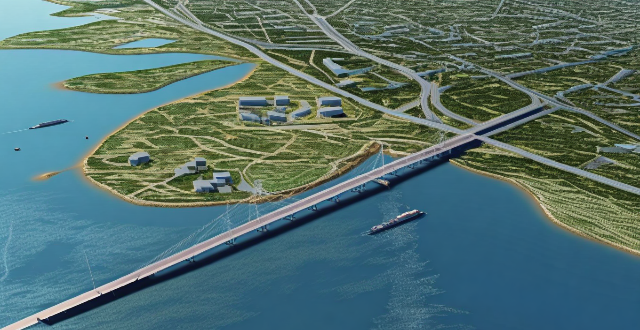
How do rising sea levels impact coastal transportation systems ?
The impacts of rising sea levels on coastal transportation systems, including roadways, bridges, port facilities, airports, and railway lines, can be categorized into direct and indirect effects. Direct effects include inundation of low-lying roads and railway tracks, damage to port facilities, vulnerabilities of coastal airports, and degradation of bridges and tunnels due to saltwater intrusion. Indirect effects encompass increased maintenance costs, changes in transportation routes, impact on trade and economy, environmental concerns, and public safety issues. To mitigate these impacts, adaptation strategies such as elevation and retrofitting, relocation, protective measures, flexible design, and improved planning are recommended.

What is an electronic speed controller ?
The text provides an overview of electronic speed controllers (ESCs), which are devices used to regulate the power sent to motors in model aircraft and drones. It describes key features such as adjustable throttle, battery protection, signal modulation, and failsafe functionality. The process by which ESCs work is outlined: receiving a signal from the radio transmitter, decoding it into a throttle setting, controlling motor speed based on this setting, and providing feedback to the pilot. Two types of ESCs are mentioned: brushed and brushless, with the latter being more complex and expensive. The text concludes that ESCs are crucial for precise control over motor speed and aircraft performance.

How do safety regulations apply to the transportation industry ?
Safety regulations are crucial in the transportation industry to ensure passenger, driver, and pedestrian safety. These regulations cover road, air, and rail travel, with key aspects including: - Road Transportation: Driver's license and training requirements, vehicle maintenance and inspection protocols, speed limits, and traffic laws. - Air Transportation: Pilot training and certification, aircraft maintenance and inspection procedures, and airport security measures. - Rail Transportation: Train crew training and qualifications, track maintenance and inspection protocols, and station safety measures. Overall, these regulations aim to reduce accidents and injuries within the transportation industry by implementing strict guidelines across various modes of transportation.
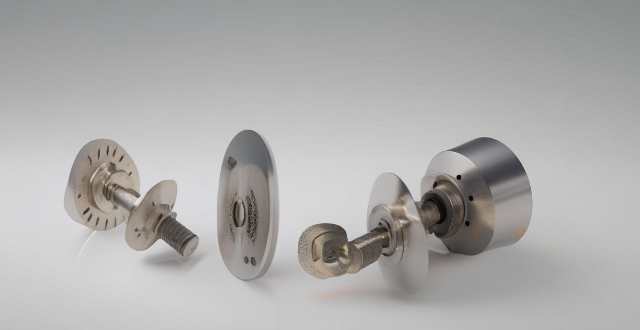
In which industries are permanent magnet motors most commonly used ?
Permanent magnet motors are utilized across a wide range of industries due to their efficiency and reliability. Key sectors include the automotive industry, where they power electric and hybrid vehicles and are used in automated manufacturing. In aerospace and defense, PM motors are crucial for aircraft systems and military applications. Appliance manufacturing benefits from PM motors in household and commercial equipment. The medical sector employs them in imaging equipment and surgical tools. Manufacturing and process control use PM motors in CNC machinery and pumps/valves. Renewable energy sectors such as wind turbines and solar tracking systems also rely on these motors. Consumer electronics, including audio and visual equipment as well as toys and hobbyist products, make use of permanent magnet motors for various functions.
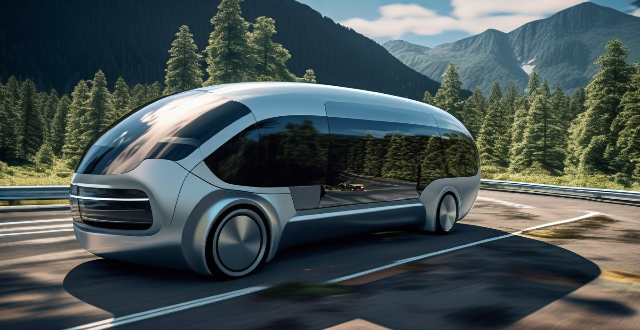
What are the most promising technologies for future transportation ?
The future of transportation is being shaped by several promising technologies, including electric vehicles, autonomous vehicles, hyperloop technology, flying cars and VTOL aircraft, maglev trains, and smart infrastructure. These advancements are expected to revolutionize the way we move around our cities, countries, and even the world.

How do I find cheap flights without sacrificing comfort ?
Finding cheap flights without sacrificing comfort is a challenge, but it's not impossible. Here are some tips to help you find the best deals on comfortable flights: Being flexible with your travel dates can make a significant difference in the price of your flight. Try to avoid peak travel times like holidays and weekends, as these tend to be the most expensive times to fly. Instead, aim to travel during off-peak times, such as midweek or early morning/late evening flights. Booking early can often get you the best deals, as airlines tend to increase prices closer to the departure date. However, if you're willing to take a risk, booking last minute can also yield some great savings. Just be prepared to compromise on your preferred flight time and seating arrangements. Flight aggregator websites like Skyscanner and Kayak allow you to compare prices across multiple airlines and find the cheapest options. These sites often have filters that allow you to prioritize factors like layover time, cabin class, and airline ratings, so you can find flights that meet your comfort requirements. Many airlines offer newsletters and loyalty programs that provide exclusive discounts and deals to subscribers. By signing up for these, you can stay informed about upcoming sales and promotions that may not be advertised elsewhere. If you live near multiple airports, consider flying out of an alternative airport instead of the main one. These smaller airports often have cheaper flights due to lower demand and fewer flight options. Just be sure to factor in the cost of transportation to and from the airport when comparing prices. Hidden city ticketing involves booking a flight with a layover at your desired destination instead of the final destination listed on the ticket. This can sometimes result in significant savings, but it's important to note that it's against most airline policies and can result in complications if discovered. If you're willing to pay a bit more for extra legroom and comfort, consider choosing economy plus seats. These seats are typically located near the front of the economy section and offer more space than standard economy seats. They're often available for a reasonable fee, especially if booked in advance. Packing light can save you money on baggage fees and make your trip more comfortable overall. Most airlines allow passengers to bring one carry-on bag and one personal item for free, so take advantage of this by packing only the essentials and avoiding overweight baggage charges.

What are the best tips for navigating through a busy airport ?
The text offers several tips for navigating through a busy airport, including checking in online, packing light, arriving early, being prepared for security checks, familiarizing oneself with the airport layout, using technology, keeping essentials handy, and staying informed. These strategies aim to help travelers save time, reduce stress, and ensure a smoother journey through the airport.